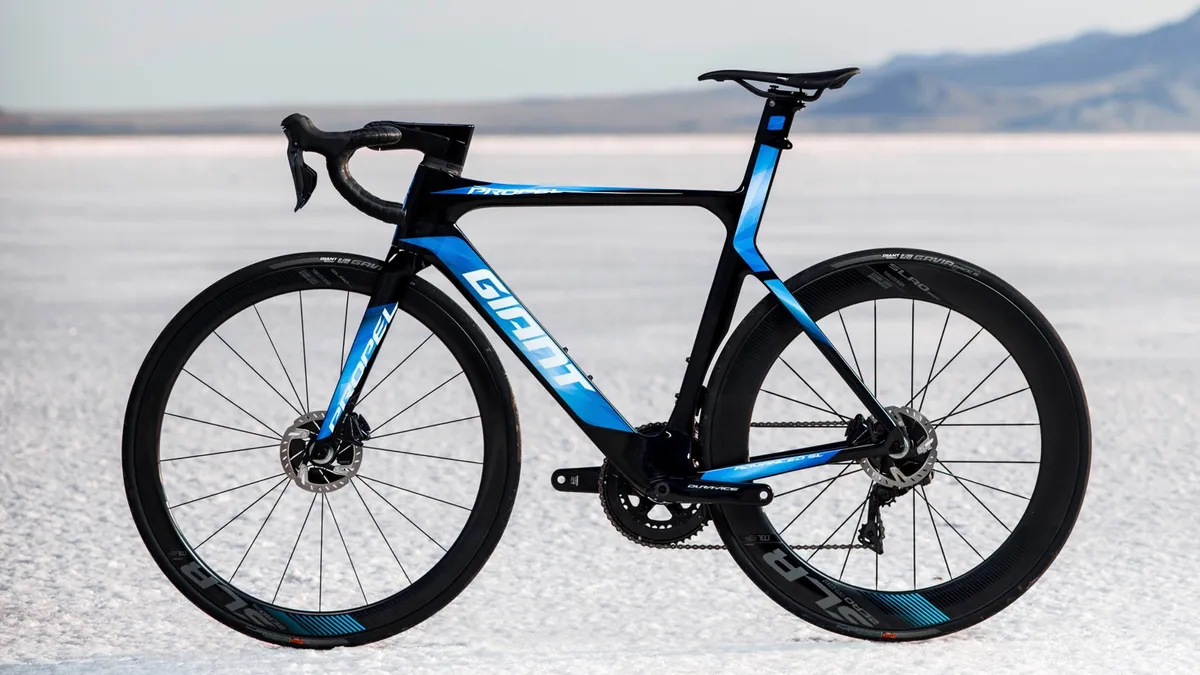Giant is all in on disc-brake aero road bikes.
Every model in the 2018 Propel Advanced aero bike line features hydraulic Shimano disc brakes, and the Taiwanese manufacturer claims the new machines are aerodynamically superior to its previous rim-brake editions and deliver a higher stiffness-to-weight ratio than the top competitors’ aero bikes.
In terms of wind-tunnel measurements, Giant found the Propel Disc to be in line with the Trek Madone and the Specialized Venge ViAS Disc.
Giant spent three years developing the Propel Disc, combining wind-tunnel work at Aero Concept Engineering in France with Giant’s deep in-house carbon manufacturing expertise.
There are no rim-brake Propels for 2018; the range runs from full electric/hydraulic Shimano Dura-Ace to mechanical/hydraulic Shimano Ultegra, all with Giant’s own carbon tubeless wheels that come set up with sealant.
Similar to ENVE’s dual-depth wheelsets, the new Propel Disc Advanced bikes come with 42mm front and 65mm rear carbon wheels.
The 2018 Propel Disc stem houses shift and cable lines underneath a bolted cover. The stem can be changed without redoing the cable lines, but requires use of Giant’s aero bar.

Can disc brakes really be aero?
“The whole concept of an aero road bike with disc bikes, when we started the project three years ago, we thought maybe that couldn’t really be done,” said Giant's senior global product marketing manager Andrew Juskaitis. “We thought it was incongruous.”
The original Propel in 2014 was an early leader in terms of aero shapes, but a number of other brands have since surpassed it with bikes such as the Trek Madone and the Specialized Venge.
To recreate the Propel, Giant went back to the CFD drawing board and designed the Propel Disc Advanced from the disc brakes up.
Giant worked with its longtime partner ACE to iterate on shapes that reduced drag on the bike and rider while still meeting weight and stiffness targets.
“It’s not just the frame and fork anymore,” Juskaitis said of what constitutes an aero bike these days. “It is every single component and how they affect each other."

Giant and ACE wind-tunnel tested bike and wheel prototypes with a mannequin that has articulating legs that rotate. Many bike brands wind-tunnel test, and some use a mannequin, but Giant and ACE claim to be the only ones testing with a ‘pedaling’ mannequin.
The final shape of the overall bike, Giant claims, is a 10-watt difference versus the old Propel. And the dual-depth wheels, Juskaitis says, are a happy medium between great aerodynamics and front-end stability.
“Wind tunnel data is great, but none of that matters if the bike doesn’t handle properly on the road,” Juskaitis said.
But back to the original question of adding large metal rotors, calipers and supporting spokes to an aero bike and making it faster: Giant claims the metal hardware doesn’t cause much drag, as the air has already hit the front tire and front rim section, churning it up, before it passes by the rotors and calipers.
“What’s more important is to keep the fork-crown area clean, at the leading edge of the bike, and allowing the air to flow smoothly,” Juskaitis said.
Tunnel testing meets real-world considerations
Nixon Huang, Giant’s senior global category manager, has led the development on road bikes since 2007.
For the Propel Disc, Huang and ACE director Xavier Gergaud tested at 40kph between 0 and 30 degrees yaw. Yaw refers to the relative wind angle when riding. For example, if you are riding at 40kph and a 22kph sidewind is blowing perfectly perpendicularly, then the yaw is 30 degrees. Zero degrees means there is no wind.
Of course wind direction and speed are ever-changing, as is rider speed and position, so brands often disagree on the best range of yaw angles at which to test, or how or even whether to weight certain yaw angles over others. For Giant, the Propel Disc was designed for minimal drag on average across 0–30 yaw.
The new Propel Disc doesn’t share a single tube shape with the original Propel.
Beyond the frameset, the Propel Disc’s most notable feature is the integrated stem, which hides the shift and cable lines and mates with the carbon aero bar.
“We did a separate stem and bar for two reasons,” Huang said, referring to the trend of one-piece bar/stem combos on some aero bikes. “One, aerodynamics; the nose cone on the front of the stem is like a boat’s prow to open up the air. And two, proper bike fit. You don’t need to disconnect the cable or brake lines to swap the stem.”
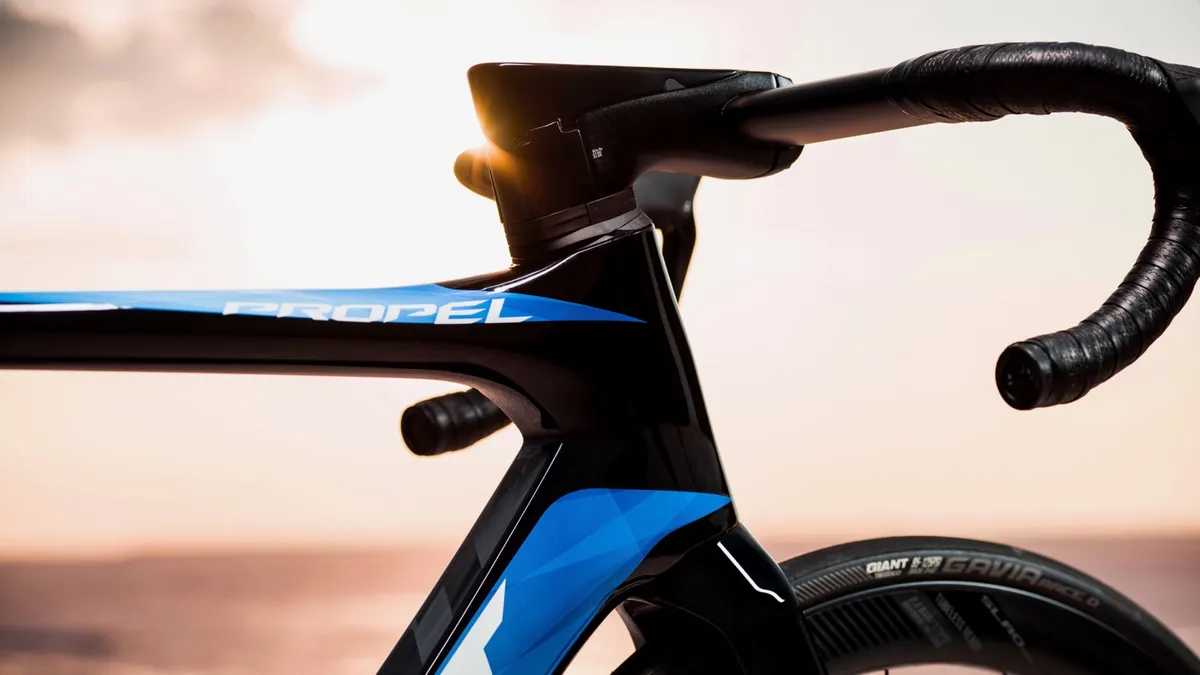
The stem does require Giants’ SLR carbon aero bar, which has a compact bend and a wide, flat top. Switching bar widths does mean rerouting of the shift and cable lines. Giant is betting that while some riders will want to change stem lengths initially, most will be happy with the stock bar width.
We tested the key competitor bikes and found the top-tier aero bikes to all be very close to each other, well within the +/- 1% margin of error
Further, Huang said Giant opted to go with a slightly thicker top section on the aero bar (at 22mm compared to 19mm or less for Specialized’s Venge ViAS or Canyon’s Aeroad CF SLX) for better stiffness and handling.
The mixed 42/65mm wheelset was chosen similarly.
“At Giant, we are 2km away from the sea, so there are often huge crosswinds,” Huang said.
The mixed-depth aero wheels (with 12 x 100/142mm thru-axles) are measurably faster than shallow wheels, but still relatively easy to handle in all conditions, Huang said.
Propel Disc vs. Specialized Venge ViAS Disc, Trek Madone and Canyon Aeroad CF SLX
Giant is notable in the bike industry because it is a vertically oriented company. This means Giant makes its own bikes in its own factory, instead of buying them from a manufacturing vendor like so many brands do.
Giant prides itself on efficient construction and boasts that the Propel Disc has a higher stiffness-to-weight ratio than the Specialied Venge ViAS, the Trek Madone and the Canyon Aero CF SLX.
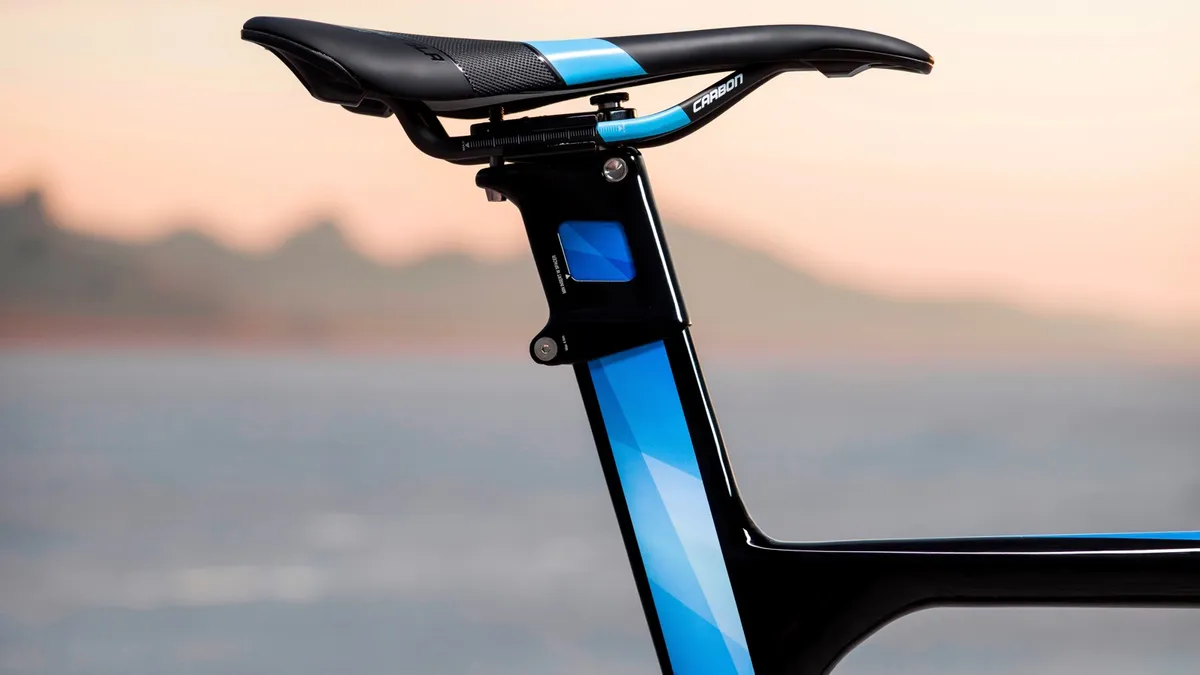
In terms of raw weight, the Propel Disc module (frame, uncut fork, headset, seatpost/seatmast, seat clamp, all hardware) in size medium is 2,145g, compared to the Venge ViAS Disc at 2,559g, the Aeroad CF SLX at 2,095g and the Trek Madone at 2,374g.
“It’s pretty easy to make a light bike, an aero bike or a stiff bike,” Juskaitis said. “To make a bike that is all three is the trick.”
Giant measured stiffness as overall frame and fork lateral deflection. Dividing this number by weight, and Giant came out on top.
As for how this bike and the others ride, you can read my Giant Propel Advanced SL 0 first ride review here.
But what about the CdA numbers?!
Giant did not specify the wind-drag numbers for the bikes, but the company did give out two calculated numbers for the power required to move bike and rider at 40kph, averaged across 0–30 degrees yaw.
The original Propel required 217 watts with the pedaling dummy; the new Propel Disc requires 207 watts.
The dummy is a replica of former Rabobank pro Grischa Niermann, who is 178cm / 5'10".
Giant declined to give the measurements ACE recorded for testing competitors' bikes.
"We tested the key competitor bikes in our studies and through the various tests we found the top-tier aero bikes — Venge, Madone and our Propel Disc — to all be very close to each other, well within the +/- 1% margin of error," said Giant global marketing director An Le.
Giant Propel Disc Advanced models, prices and availability
There are four Giant Propel Disc Advanced models. UK and Australian pricing was not immediately available, but will be added here as soon as possible.
All the bikes use BB86 and what Giant calls OverDrive 2, a tapered, oversized steerer tube that goes from 1¼ to nearly 1.5in.
Propel Advanced SL Disc 0

- Carbon, blue and white
- Integrated seatmast
- Top-level carbon
- Carbon stem, carbon bar
- Full Shimano Dura-Ace 9170 hydraulic Di2, including Dura-Ace power meter 52/36 and 11-28
- Gavia Race 0 Tubeless 25mm
- Price: $11,300 / AU$ 11,999
Propel Advanced SL Disc 1
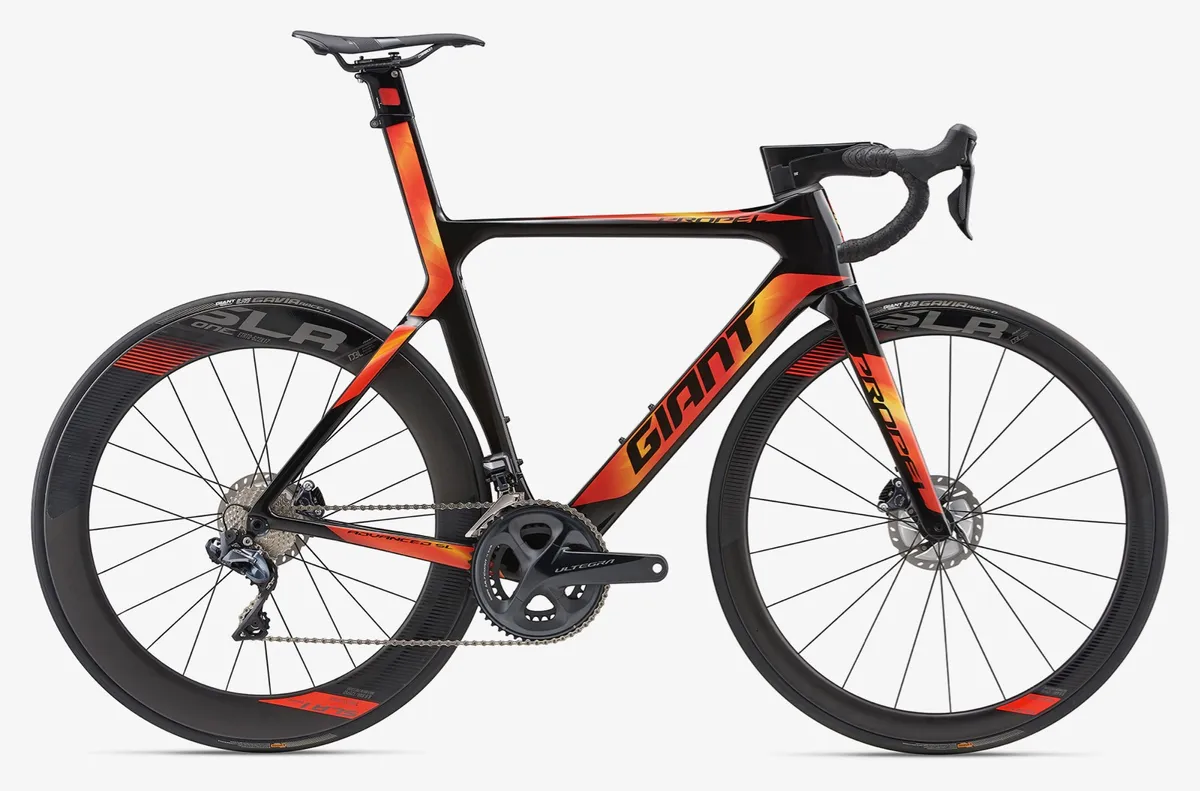
- Carbon, red and orange
- Integrated seatmast
- Top-level carbon
- Carbon stem, carbon bar
- Full Shimano Ultegra hydraulic Di2 except KMC X11E-1 chain
- 52/36 and 11-28
- Gavia Race 0 Tubeless 25mm
- Price: $7,000 / AU$7,999
Propel Advanced Pro Disc
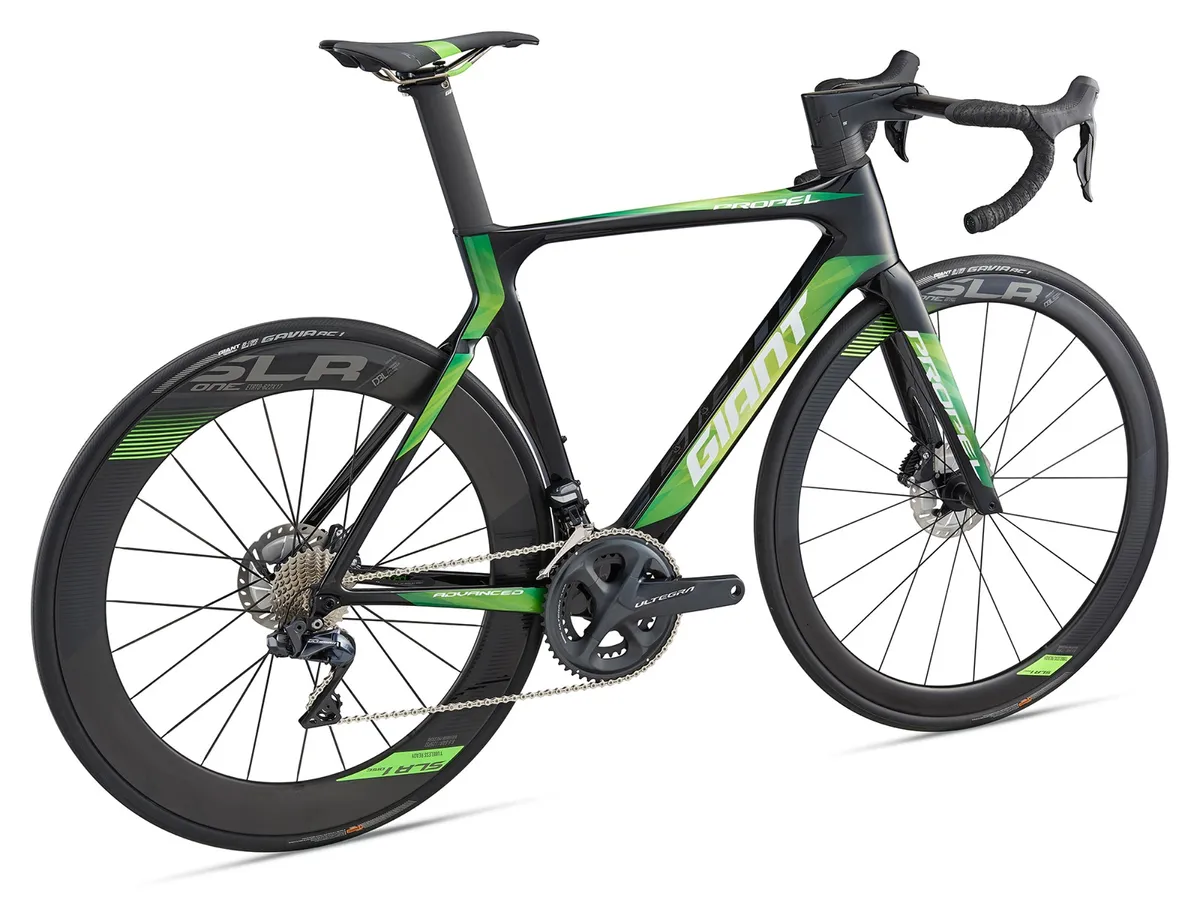
- Carbon, green and white
- Second-level carbon
- Adjustable seatpost
- Alloy stem, carbon bar
- Full Shimano Ultegra hydraulic Di2 except KMC X11E-1 chain
- 52/36 and 11-28
- Gavia Race 1 Tubeless 25mm
- Price: $5,700 / AU$6,599
Propel Advanced Disc
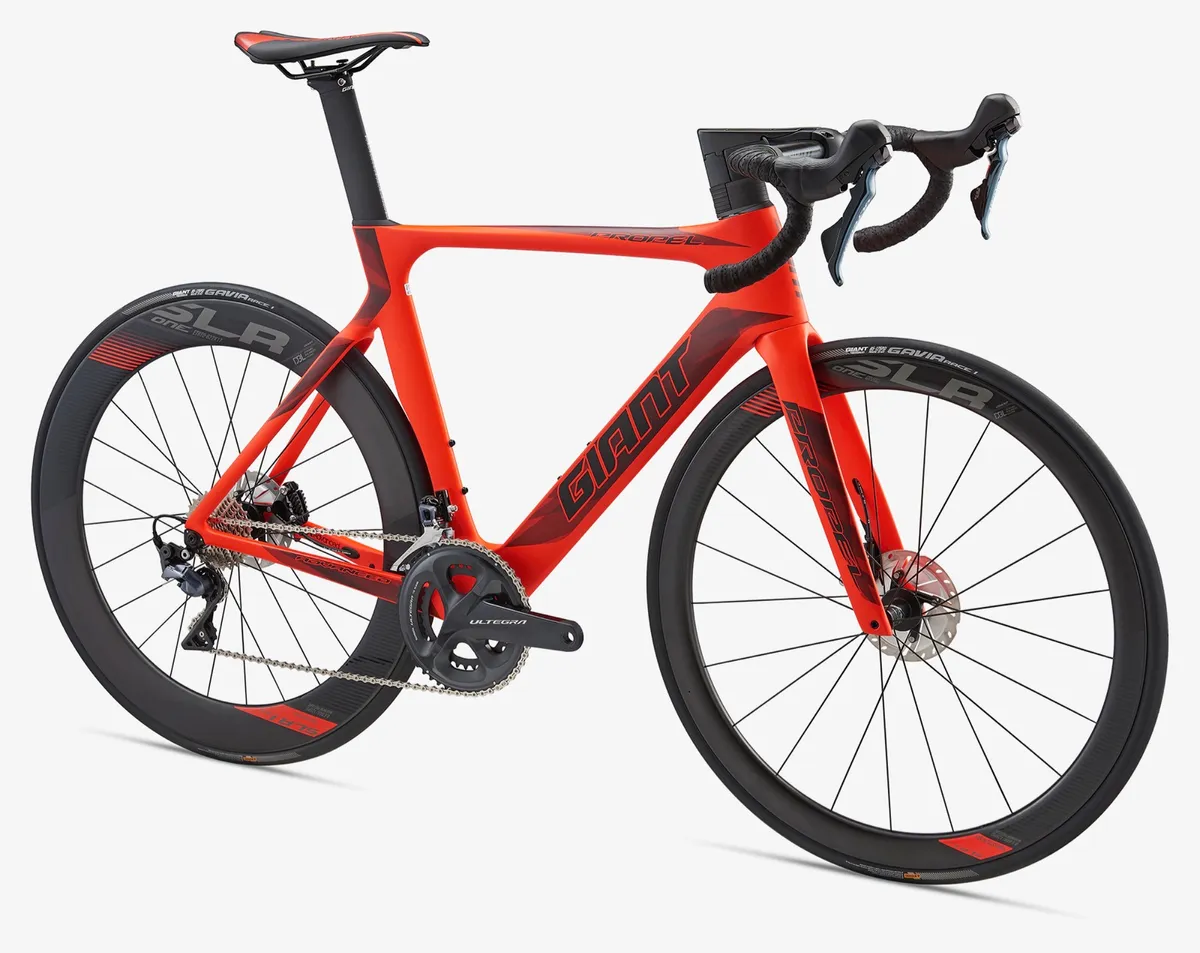
- Neon red and black
- Second-level carbon
- Alloy/carbon fork
- Adjustable seatpost
- Alloy bar and stem
- Full Shimano Ultegra hydraulic mechanical except KMC X11E-1 chain
- Gavia Race 1 Tubeless 25mm
- Price: $3,700 / AU$4,999

